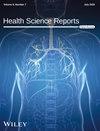The Liver Knows: Preoperative MELD Score as a Predictor of Outcome in Patients Undergoing Left Ventricular Assist Device Implantation. A Single-Center Retrospective Cohort Study
Abstract
Background and Aims
Right-side heart failure (RSHF) jeopardizes left ventricular assist device (LVAD) short- and long-term outcomes. The model for end-stage liver disease (MELD) score is an effective means of evaluating liver dysfunction. This study aims to investigate the predictive utility of preoperative MELD on post-LVAD implantation outcomes, specifically focusing on the incidence of RSHF.
Methods
This single-center retrospective cohort study included 133 patients who received durable continuous-flow LVADs with a centrifugal pump from 2015 to 2022. The primary outcome was RSHF, defined as necessitating right ventricular (RV), temporary or durable, mechanical support. The research hypothesis was that a high preoperative MELD score is associated with a higher incidence of RSHF after LVAD implantation.
Results
The overall post-LVAD RSHF incidence was 18% (n = 24), and 90-day mortality was 30% (n = 40). The mean MELD score was 14.7 (±6.9). RSHF was significantly associated with in-hospital mortality (Peasrson's chi-squared = 37.86, p < 0.001). The RSHF group had a higher mean MELD score of 18.7 (±2), whereas the control group had a mean MELD score of 13.8 (±0.5). The mean MELD difference between the RSHF and non-RSHF groups was 4.75 (95% CI: 1.7–7.7), with the RSHF group having a higher mean and (18.7 ± 2, p = 0.001) compared to the control group (14 ± 0.5, p = 0.002). The incidence of RSHF did not statistically differ between INTERMACS groups (p = 0.35). Preoperative MELD score was an independent predictor of RSHF in a multivariable logistic regression model, including age, EuroSCORE-2, and INTERMACS categories (OR 1.08; 95% CI: 1.02–1.15; p = 0.009).
Conclusion
Preoperative MELD score may predict the incidence of postoperative RSHF in LVAD patients. Candidates with elevated MELD scores should be carefully evaluated for alternative therapeutic modalities or optimized aggressively before LVAD implantation.


 求助内容:
求助内容: 应助结果提醒方式:
应助结果提醒方式:


